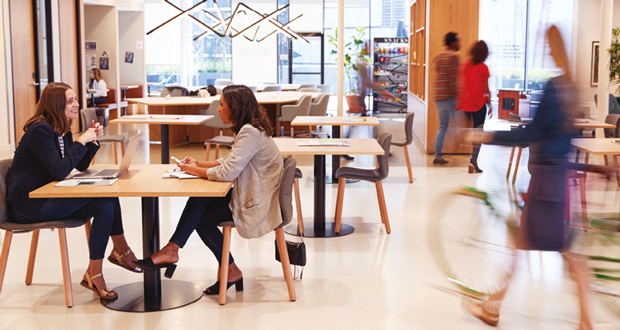 Raj Krishnamurthy, CEO at Freespace discusses the trends driving the boom in hybrid working, how employee preferences and needs are shaping the future, and why dynamic capacity planning holds the key to the way we manage workspaces
Raj Krishnamurthy, CEO at Freespace discusses the trends driving the boom in hybrid working, how employee preferences and needs are shaping the future, and why dynamic capacity planning holds the key to the way we manage workspaces
COVID-19 has changed our lives dramatically. Two years on from the enforcement of national lockdowns, we’re only now beginning to better understand some of the social and behavioural changes that the virus has instilled for the long term, with pre- and post-pandemic norms varying wildly.
Take the workplace, for example. Where the office was previously viewed as the central hub of all working activities, underpinned by strict 9-to-5 cultures and the demand for permanent occupancy, the need for social distancing to protect lives demonstrated to employers and employees alike that home working is both possible and, in several ways, preferable.
It’s safe to say that the pandemic has had a massive impact on commercial real estate.
While COVID-19 induced turbulence has shaken the sector in the past two years, continually testing its resilience, recent figures suggest that there is still plenty of life in the office yet.
According to the Freespace Index, a metric published by Freespace that tracks office occupancy, the number of offices open in both the UK and London in March 2022 reached figures not seen since the start of the pandemic in March 2020. Stipulating that any office with occupancy of more than 10 per cent can be considered to be active, its findings reveal 93 per cent of offices in the UK were open on Tuesday 8 March, with 88 per cent open across London.
Driven by 140,000 sensors dedicated to measuring building occupancy and environmental conditions globally, data from the Index also shows that average office occupancy was 39 per cent in the UK and 40 per cent in London, reaching levels not seen since Autumn 2021.
“The discrepancy between openness and occupancy is down to the simple fact that many organisations today have embraced hybrid working models,” explains Raj Krishnamurthy, Freespace’s CEO.
“People have been given more flexibility in their work. In a world where videoconferencing and remote working has become normal, asynchronised operations have proven not just workable but, in many ways, successful.”
FOUNDING FREESPACE
Krishnamurthy isn’t shy about showing his passion for using technology to create futureproofed, value-based solutions. He founded Freespace in 2015 at a time when new ‘agile’ working techniques were evolving with a mission to organise the world’s workspaces to make them as efficient as possible. This need has only been significantly expedited following the pandemic.
To date, Freespace has deployed its enterprise technologies in more than 130 cities around the world, helping its clients to optimise their real estate strategies through the provision of hybrid-working solutions that engage employees, create safe and hygienic environments, inform office designs and support the drive to net zero.
“The steady state of the office pre-pandemic was a buzzing, almost hyperactive work environment which was dependent upon synchronous events, synchronous presence, synchronous behaviour. This is no longer the case,” he continues.
“The acceptance of new working patterns has given everybody a newfound freedom to work where they want and how they want; to move the dial between independent and collaborative working as needed.”
Indeed, it is a shift that has changed the entire equation for what equals a successful workplace.
Offices are no longer simply the central hub of productivity. Employees now frequent the workplace for a variety of different reasons, including for collaborative opportunities, socialising opportunities, and to work in an environment which stimulates greater productivity and is free from distractions in quiet spaces, while being an invaluable asset for sustaining corporate culture.
“Before COVID-19, headcount and amenity ratios drove demand, while test-fits, space plans and lease negotiations drove capacity,” Krishnamurthy explains. “Occupancy planning was static, which made the math straightforward: multiplication, ratios and percentages with a little geometry thrown in for good measure.
“However, the pandemic has created two new variables: individual employee preferences and time. With teams having more say on when and how much time they spend in the office, and what activities they do while there, organisations should forecast requirements on a daily basis to consistently make the best use of the space that they have available.”





